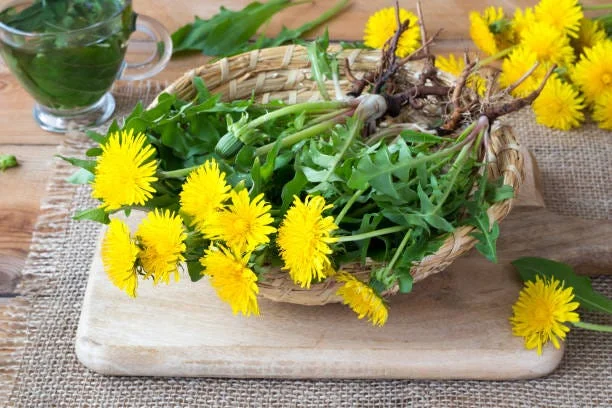When we think of dandelions, we often picture their bright yellow flowers or fluffy seed heads dancing in the breeze. However, beneath this humble plant’s cheerful exterior lies a treasure trove of health benefits, primarily hidden within its roots. In this article, we delve into why dandelion roots are the most important part of the plant, exploring their medicinal properties, culinary uses, and ecological significance that make them a valuable asset in holistic wellness and gardening practices.
Medicinal Marvels of Dandelion Roots
- Liver Health: Dandelion roots have long been revered for their detoxifying properties, supporting liver function and aiding in the elimination of toxins from the body.
- Digestive Aid: Rich in prebiotic fibers, dandelion roots promote healthy digestion by nourishing beneficial gut bacteria, improving nutrient absorption, and easing digestive discomfort.
- Anti-Inflammatory Benefits: Compounds like sesquiterpene lactones and beta-sitosterol found in dandelion roots exhibit anti-inflammatory properties, offering relief from joint pain, swelling, and inflammatory conditions.
- Blood Sugar Regulation: Preliminary studies suggest that dandelion root extracts may help regulate blood sugar levels, making them beneficial for individuals managing diabetes or insulin resistance.
- Immune Support: The immune-modulating effects of dandelion roots strengthen the body’s natural defenses, promoting resilience against infections and supporting overall immune health.
Culinary and Nutritional Uses
- Edible Roots: Dandelion roots are edible and can be roasted, ground, and brewed as a caffeine-free coffee alternative rich in antioxidants and beneficial compounds.
- Culinary Delights: Incorporate chopped dandelion roots into soups, stews, or stir-fries for added nutrition, earthy flavor, and culinary creativity.
- Nutrient Density: Dandelion roots are a good source of vitamins (such as vitamin C and vitamin K), minerals (including potassium, calcium, and iron), and antioxidants that contribute to overall well-being.
Ecological Significance in Gardening
- Soil Health: Dandelion roots possess deep taproots that help break up compacted soil, improve aeration, and enhance water infiltration, benefiting overall soil health and plant growth.
- Dynamic Accumulators: Dandelions are dynamic accumulator plants, drawing nutrients such as potassium, phosphorus, and trace minerals from deep within the soil, which can then be recycled when the plant decomposes.
- Pollinator Magnet: Dandelion flowers attract pollinators such as bees and butterflies, supporting biodiversity and ecosystem resilience in home gardens and natural habitats.
Cultivating Dandelion Roots
- Harvesting: Harvest dandelion roots in early spring or late fall when the plant’s energy is concentrated in the roots. Use a shovel or garden fork to carefully dig up roots, leaving some in the soil to regenerate.
- Processing: Wash and scrub harvested roots thoroughly to remove soil. Dry them in a well-ventilated area or use a dehydrator for culinary or medicinal preparations.
- Storage: Store dried dandelion roots in airtight containers away from moisture and sunlight to preserve their potency and flavor.
Conclusion: Harnessing Nature’s Wisdom
Dandelion roots represent nature’s wisdom encapsulated in a humble plant, offering a myriad of health benefits, culinary delights, and ecological contributions. By recognizing the importance of dandelion roots in holistic wellness and gardening practices, we unlock their potential to nourish our bodies, enrich our gardens, and foster a deeper connection with the natural world. Embrace the versatility and vitality of dandelion roots as a testament to the remarkable gifts found in even the most unassuming of plants.

